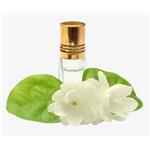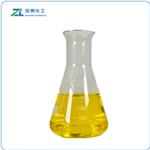The concrete is extracted from flowers using petroleum ether with an average yield of approximately 3%. It is a waxy,
brownish-red mass. It smells like jasmine and is partially soluble in 95 to 96% ethanol
Obtained by distilling the absolute essence with superheated steam at reduced pressure (35 to 40 mmHg) and at 88 to
92°C, based on the original concrete; yields up to 23.5%
JasMin extract is obtained by solvent extraction, via the concrete, from the flowers of Jasminum grandiflorum L. (Oleaceae), cultivated in North Africa (Egypt, Morocco), India, and China. Indian jasmine absolute is also produced from the flowers of Jasminum sambac (L.) Aiton. The concrete is usually a brown to dark brown waxy mass, with a characteristic jasmine odor.
mp 48–51 ℃; ester number: 70–125.
The absolute is generally a reddish-brown liquid with a delicate jasmine odor; the color deepens on storage.
n20D 1.4780–1.4920; acid number: 8–14; ester number: 120–220.
When extracted two or three times with hexane, 1 t of jasmine blossoms yields about 2.5–3 kg of concrete. Extraction of the concrete with ethanol gives about 60% yield of the absolute.
The main volatile component of jasmine oil is benzyl acetate. However, minor components such as indole, (Z)-jasmone , and methyl jasmonate contribute strongly to the typical jasmine fragrance. Annual worldwide production of jasmine concrete and absolute hardly exceeds 10 t. The absolute is one of the most valuable blossom fragrances used in fine fragrances.
jasmine oil is fragrance. It is credited with moisturizing, soothing, skin-conditioning, and healing properties. given these properties, it is indicated for dry and sensitive skins, and also for skin with dermatitis. There is no essential oil of jasmine; rather jasmine oil is a volatile oil obtained from the plant’s flowers through enfleurage, a very time-consuming and costly process. The freshly gathered flowers are sprinkled over oiled glass trays and the flowers are renewed every morning while the plant is in bloom. Finally, the pomade is scraped off the glass, melted at as low a temperature as possible, and then strained. When olive oil is used, the flower petals are placed on coarse cotton cloths previously saturated with the olive oil. The cloths are squeezed under a press, yielding what is termed huile antique au jasmin. The oil of jasmine is later separated from the olive oil. This makes jasmine oil one of the most expensive oils available, and can lead to the use of adulterated versions. Its sweet odor is so delicate and unique that until recently, artificial or synthetic production was believed impossible. Today, synthetic otto of jasmine exists. However, a portion of the natural oil must be added to the synthetic mixture for a satisfactory product. Jasmine oil may cause allergic reactions such as swelling, which can last several days.
An essential oil in perfumery and flavoring. It is dextrorotatory.
Essential oil composition
The oil contains alcohols (nerol, nerolidol, terpineol, etc.), benzaldehyde, benzylacetate, linalyl acetate,
phenols (p-cresol, eugenol), acids and ketones (jasmone).
Low toxicity by ingestion. Whenheated to decomposition it emits acrid smoke andirritating vapors.



